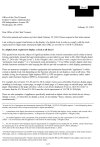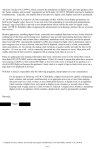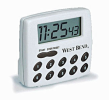I made that argument at the end of the second page. The intent of the rule, IMO, is to ensure accurate time keeping is available during IFR flight.
“Pilots are getting the time keeping information they need, when they need it, in the format they want it, from their GPS, PFD, MFD, and/or other appliances. If the FAA wants to ensure that pilots have accurate time keeping available to them during IFR flight, it does not make sense to disqualify an appliance as a clock for IFR flight just because the appliance's basic clock is a couple of taps or knob-twists away on a page that is not displayed at all times.”
Not quite. The FAA didn’t merely accept uAvionix’s statement; it went further and said that any digital clock which meets AC 20-94A automatically meets 14 CFR 91.205(d)(6).
“In addition to the above, we accept your statement, without further review, that both the AV-20 and AV-20-S meet the requirements for a Digital Clock as defined by AC 20-94A. Clocks which meet the requirements of AC 20-94A also meet the requirements of 14 CFR 91.205(a) and 14 CFR 91.205(d)(6).”









